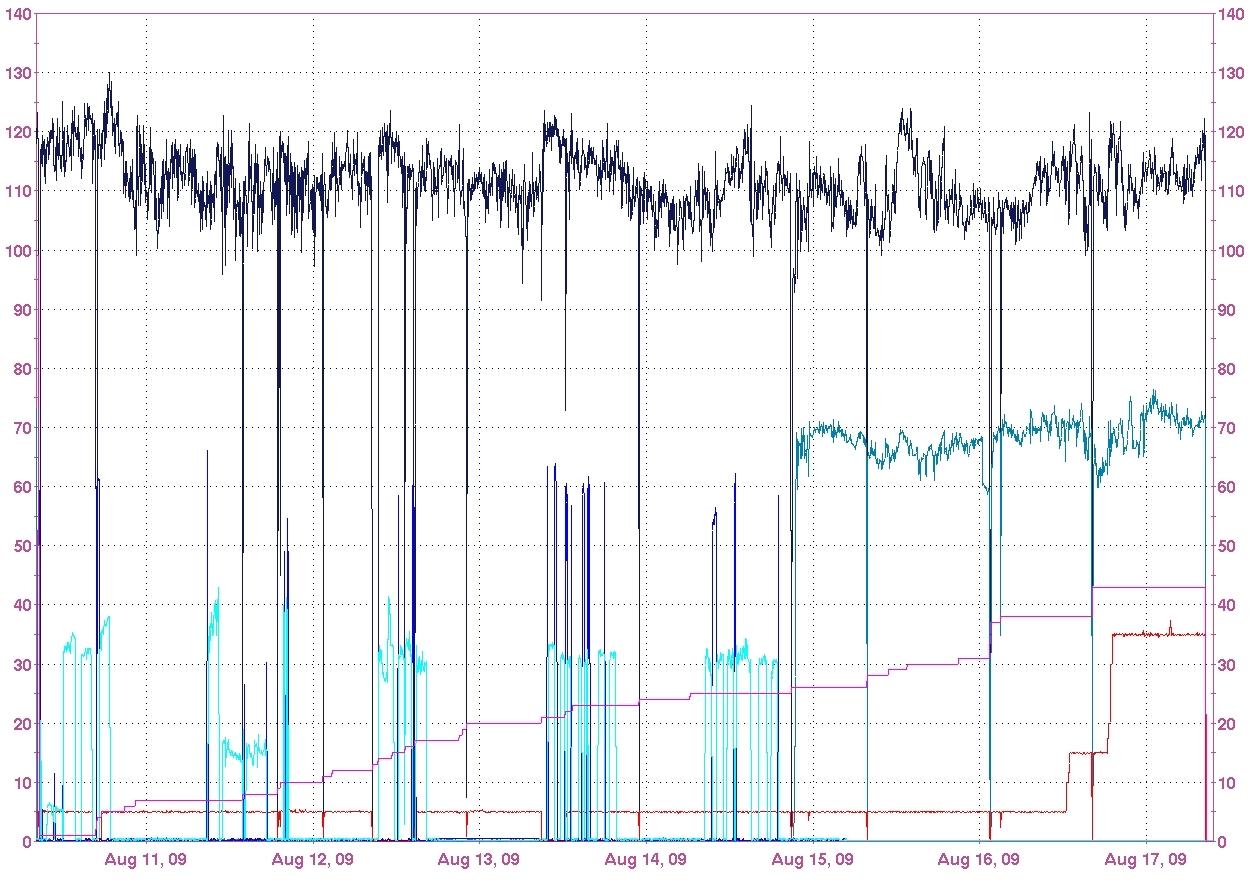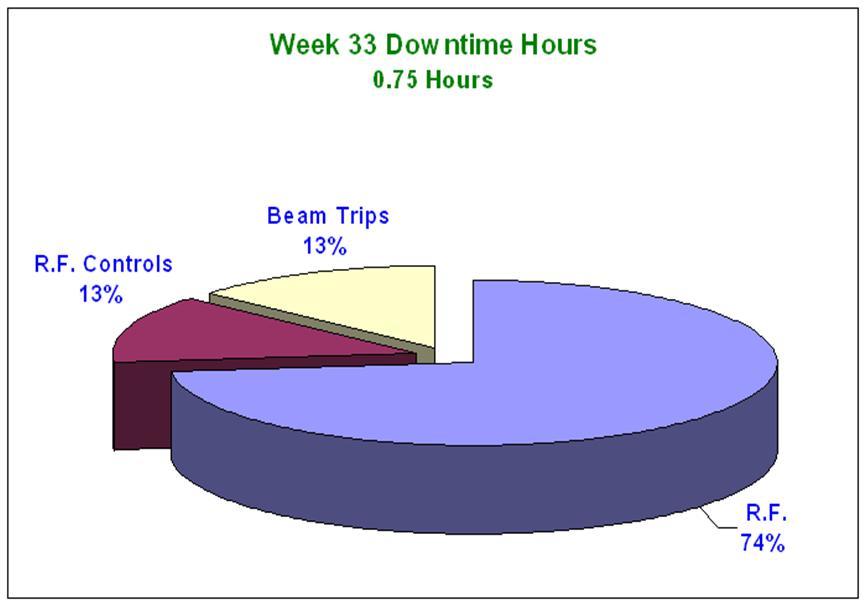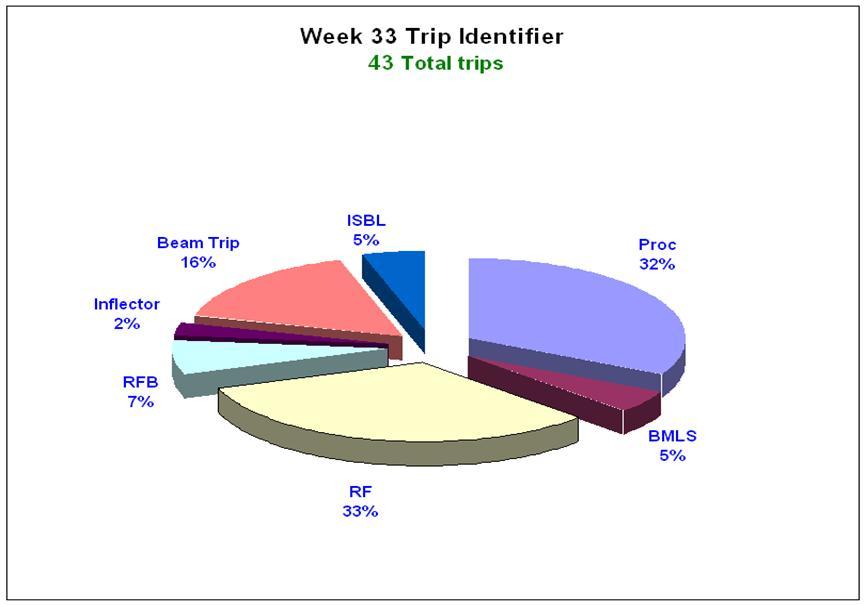Week 33 (10 August to 17 August) marked a record performance week for beam delivery from TRIUMF's 500 MeV Cyclotron. During this week, the cyclotron experienced only 0.85 hours of maintenance, 0.75 hours of downtime, and 0.10 hours of cyclotron tuning (see Figure 2). In total, the time off was only 2.45 hours--leaving beam on (in Beam Line 1A) for a record 165.55 hours. According to Jamie Cessford, Cyclotron Operations Coordinator, this is 0.80 hours longer than the previous record performance week (Week 48: 24 November to 01 December, 2008). As a result, many experimenters happily received more beam time than expected for their experiments. BL1A also received the most weekly charge in a number of years during Week 33. Last year's BL1A charge for the record week was 18.31 mAhr, whereas the charge for week 33 this year was 18.46 mAhr.
Figure 1: Week 33 beam production: BL1A (black), PIF (pale blue), BL2A (red), BL2C4 (blue), and trip count (magenta)
The Accelerator Division has recently begun a number of new initiatives to monitor and improve beam delivery. In a significant paradigm shift, the historical maintenance rhythm has been altered to better reflect the current experimental rhythm. This has led to the historically compulsory 12 hour weekly maintenance period being altered to be 'maintenance if required' except in designated weeks to accommodate specific tasks. In addition to making more beam time available, new downtime reporting methods and delivery quality yardsticks have been put in place to improve the quality of delivery. In the coming weeks, weekly and year-to-date statistics on downtime per group as well as beam availability will be posted around the site to promote better awareness of the different factors that contribute to downtime. Another initiative is the trip counter, a computer program that counts the number of times the beam goes off (due to trips as well as procedural offs) per week. "We started counting 'offs' because it can be hard on the targets, especially the ISAC target; when the proton beams go on and off needlessly, the resultant thermal cycle can cause unnecessary stress and premature aging to the targets," explained Cessford. Since counting began, the average number of trips experienced per week is 100. During Week 33, the cyclotron experienced only 43 trips (see Figure 3)--the previous best was Week 25 with 62 trips. As demonstrated in Figure 3, the majority of the trips were due to RF problems and operational procedures.
The cyclotron is the heart of the TRIUMF facility and optimal cyclotron performance and reliable beam delivery are essential to the success of a large portion of TRIUMF programs, including those at the ISAC facility, the Centre for Molecular and Materials Science in µSR, and the Proton Irradiation and Treatment Facilities. As a result of careful monitoring and system upgrades, the cyclotron beam properties and capabilities have and will continue to improve, as this record Week 33 has demonstrated.
Figure 2: Week 33 Downtime Hours
Figure 3: Week 33 Trip Identifier
Click here to view the Beam Delivery wiki and here to view ISAC downtime statistics.
-- Meghan Magee, Communications Assistant



